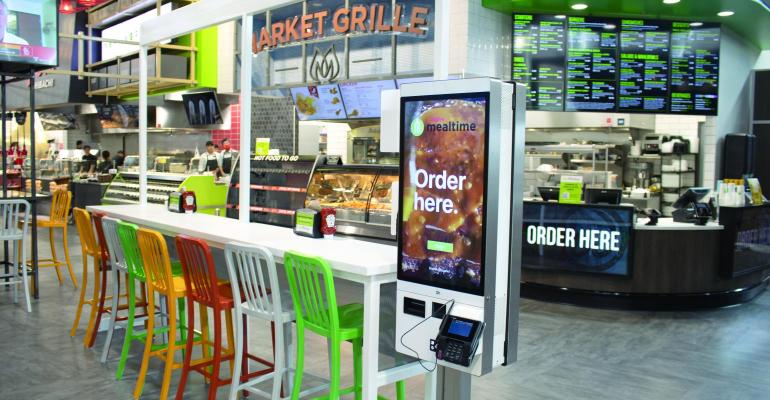Food halls have remained a popular format for combining multiple foodservice brands in a single location, often providing local chefs with a venue to experiment with new concepts, and luring consumers with a variety of elevated offerings.
The ongoing expansion of food hall-style foodservice offerings in grocery stores has emerged alongside this trend as a winning solution for supermarket operators as well, and is expected to continue gaining momentum in the year ahead. Companies such as Hy-Vee, H-E-B, and Kroger have been opening massive stores that feature multiple branded restaurant concepts, with seating, as they seek to capture more share of their customers’ overall meal spending. Operators such as Whole Foods and H Mart have also long been leading the way in this area, operating stores with multiple higher-end restaurant offerings.
“The growth of food halls or multi-concept operators in supermarkets is driven by the growth of the food hall category overall,” said Mike Kostyo, vice president at consulting firm Menu Matters.
Many younger consumers have grown up with food trucks and the “street-food culture,” he said, and they often associate smaller, more unique concepts with on-trend, higher-quality offerings.
“You also had consumers in urban areas who liked that they could make a personalized meal with a group of friends in a food hall, mixing and matching foods and dishes from different stalls, at a time when customization and personalization were key and often expected,” said Kostyo.
Many supermarkets have become a “third place” apart from home and work, often including coffee bars and outdoor seating, which makes them a logical venue for elevated, food hall-style formats, he said.
“I went to my local supermarket this week, and there were people meeting, reading books, and playing chess in the seating area attached to a food hall-style area where you can get street tacos, sushi, and wine,” said Kostyo. “That’s the type of vibrant brand experience that supermarkets want to give consumers.”
Among this year’s food hall-style developments in the food retailing space:
California’s Northgate Markets opened a supermarket with a Mexican food hall, called Mercado Northgate Gonzales, that features more than 20 food stalls, live music, and a fine-dining restaurant. Concepts will include Chiva Torta, offering a menu of tortas; taco concept Los Guichos, along with some more upscale concepts from local chefs and several snack, beverage, dessert offerings.
H-E-B continued to expand its house-brand, in-store foodservice offerings, including True Texas BBQ and SouthFlo Pizza. In February the company opened a 97,000-square-foot store in Lake Austin, Texas, that included both these concepts, plus a full bar, a sushi offering from SushiYa, and the Lake Austin Coffee Spot, which offers breakfast tacos and house-baked pastries in addition to coffee. The store includes both indoor and outdoor seating.
Hy-Vee also continued to expand its multi-concept foodservice offerings, which include HyChi, The Hibachi, Nori Sushi, Market Grille, Wahlburgers at Hy-Vee, Long Island Deli, and Mia Italian. “Everything we do in our food hall really begins with quality,” Hy-Vee CEO Jeremy Gosch told Supermarket News.
Although Kroger Co. recently ended its partnership with Kitchen United, which operated a blend of restaurant concepts inside Kroger stores, the retailer has continued to open supermarkets with multiple foodservice brands inside. The closing of Kitchen United appeared to be related more to the viability of ghost kitchens than to the popularity of food-hall type offerings.
Jackson Mitchell, from the family that owns Mitchell Grocery, unveiled plans to open FreshTake in Augusta, Ga., a 42,000-square-foot store that will include a walk-up barbecue smokehouse on the outdoor patio, a sushi bar, a pizza-and-pasta station, a sandwich concept, a hot food bar, and a fresh juice and smoothie station.
“The vast majority of large, new-build supermarkets are including food hall-style dining options, so the trend is certainly here to stay,” said Kostyo.
Today’s consumers have grown up knowing they can get prepared foods such as high-quality wood-fired pizza or house-made Asian-style bowls from a kiosk within their supermarket, he said.
“You also have millennials, who are growing up and raising families, looking for these easier, more cost-effective options that are still restaurant-quality from their supermarket,” he said. “There are a lot of tailwinds for food hall operations in supermarkets.”





